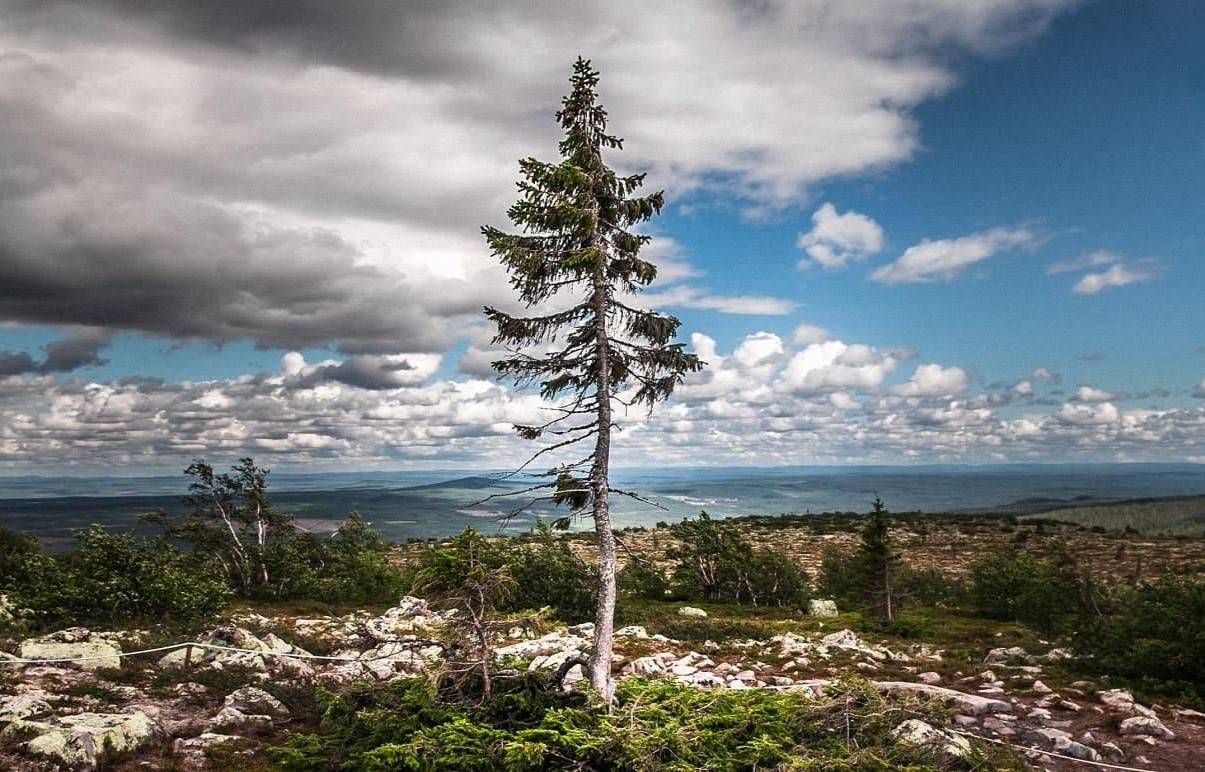
Old Tjikko is one of the oldest known trees on Earth, standing tall in Sweden. This ancient Norway spruce has a root system that dates back over 9,500 years! Imagine the stories it could tell. Found on Fulufjället Mountain, Old Tjikko has witnessed countless seasons, weather changes, and historical events. Its age was determined through carbon dating, revealing its incredible longevity. Unlike other trees, Old Tjikko regenerates by cloning itself, allowing it to survive for millennia. This remarkable tree is not just a natural wonder but also a symbol of resilience and endurance. Curious about more? Let's dive into 35 fascinating facts about Old Tjikko!
Key Takeaways:
- Old Tjikko, a 9,560-year-old Norway spruce, survived through harsh climates and has become a symbol of resilience, inspiring efforts to protect natural environments.
- Scientists study Old Tjikko to understand climate history, tree longevity, genetic research, and conservation efforts, providing valuable insights for biodiversity and climate change adaptation.
What is Old Tjikko?
Old Tjikko is a fascinating tree located in Sweden. This ancient tree has captured the attention of scientists and nature enthusiasts alike due to its incredible age and unique characteristics. Let's dive into some intriguing facts about Old Tjikko.
-
Old Tjikko is a Norway spruce: This tree species is native to Europe and is known for its resilience and longevity.
-
Located on Fulufjället Mountain: You can find Old Tjikko in the Fulufjället Mountain region of Dalarna, Sweden.
-
Estimated to be 9,560 years old: Scientists have determined the age of Old Tjikko using carbon dating techniques.
-
Discovered in 2004: A geologist named Leif Kullman discovered Old Tjikko while conducting research in the area.
-
Named after a dog: Kullman named the tree after his late dog, Tjikko.
-
Clonal tree: Old Tjikko is a clonal tree, meaning it has reproduced asexually by cloning itself over millennia.
-
Root system is ancient: While the visible part of the tree is relatively young, the root system has been alive for thousands of years.
-
Survived through harsh climates: The tree has endured extreme weather conditions, including ice ages and harsh winters.
-
Height of about 5 meters: Despite its age, Old Tjikko stands at a modest height of around 5 meters (16 feet).
-
Part of a larger forest: Old Tjikko is not alone; it is part of a larger forest of ancient trees in the region.
How Old Tjikko Survived for Millennia
The survival of Old Tjikko over thousands of years is nothing short of remarkable. Here are some factors that contributed to its longevity.
-
Asexual reproduction: By cloning itself, Old Tjikko has been able to maintain its genetic material over millennia.
-
Protected by snow: During harsh winters, snow cover has protected the tree from extreme cold and wind.
-
Resilient root system: The tree's root system has adapted to survive in nutrient-poor soil and harsh conditions.
-
Slow growth rate: Old Tjikko's slow growth rate has allowed it to conserve energy and resources.
-
Adaptation to climate change: The tree has adapted to various climate changes over thousands of years.
-
Minimal human interference: The remote location of Old Tjikko has protected it from human activities that could have harmed it.
-
Symbiotic relationships: The tree has formed symbiotic relationships with fungi and other organisms that help it absorb nutrients.
-
Genetic resilience: The genetic makeup of Old Tjikko has contributed to its ability to withstand environmental stressors.
-
Natural selection: Over thousands of years, natural selection has favored the survival of Old Tjikko's resilient clones.
-
Microclimate: The specific microclimate of Fulufjället Mountain has provided a suitable environment for Old Tjikko's survival.
The Scientific Significance of Old Tjikko
Old Tjikko is not just an ancient tree; it holds significant scientific value. Researchers have gained valuable insights from studying this remarkable tree.
-
Understanding climate history: By studying Old Tjikko, scientists can learn about past climate conditions and changes.
-
Insights into tree longevity: The tree provides clues about the factors that contribute to the longevity of trees.
-
Genetic research: Researchers can study the genetic material of Old Tjikko to understand how it has adapted to survive for so long.
-
Carbon dating techniques: The tree has helped refine carbon dating techniques used to determine the age of ancient organisms.
-
Ecosystem studies: Old Tjikko's interactions with its environment provide insights into the dynamics of ancient ecosystems.
-
Conservation efforts: The study of Old Tjikko can inform conservation strategies for other ancient trees and forests.
-
Biodiversity research: The tree's long history offers a unique perspective on the biodiversity of the region.
-
Climate change adaptation: Understanding how Old Tjikko has adapted to climate change can inform strategies for other species.
-
Educational value: Old Tjikko serves as an educational tool for teaching about ancient trees and their importance.
-
Inspiration for resilience: The tree's ability to survive for thousands of years inspires efforts to protect and preserve natural environments.
Fun Facts About Old Tjikko
Beyond its scientific significance, Old Tjikko has some fun and interesting aspects that make it even more fascinating.
-
Tourist attraction: Old Tjikko has become a popular destination for tourists and nature enthusiasts.
-
Photogenic tree: The tree's unique appearance makes it a favorite subject for photographers.
-
Symbol of resilience: Old Tjikko is often seen as a symbol of resilience and endurance.
-
Featured in documentaries: The tree has been featured in various documentaries about ancient trees and natural history.
-
Cultural significance: Old Tjikko holds cultural significance for the local communities in the region.
The Enduring Legacy of Old Tjikko
Old Tjikko, a 9,558-year-old Norway spruce, stands as a testament to nature's resilience. Found on Fulufjället Mountain in Sweden, this ancient tree has witnessed millennia of change. Its age, determined through carbon dating, makes it one of the oldest known living trees on Earth. Despite harsh conditions, Old Tjikko has thrived, thanks to its clonal reproduction method, where new trunks, branches, and roots replace old ones over time.
This remarkable tree not only fascinates scientists but also inspires those who learn about it. Its longevity offers insights into climate change, survival strategies, and the history of our planet. Old Tjikko's story reminds us of nature's incredible ability to adapt and endure. Next time you think about ancient wonders, remember this resilient spruce, standing tall through the ages, quietly telling the story of Earth's past.
Frequently Asked Questions
Was this page helpful?
Our commitment to delivering trustworthy and engaging content is at the heart of what we do. Each fact on our site is contributed by real users like you, bringing a wealth of diverse insights and information. To ensure the highest standards of accuracy and reliability, our dedicated editors meticulously review each submission. This process guarantees that the facts we share are not only fascinating but also credible. Trust in our commitment to quality and authenticity as you explore and learn with us.


